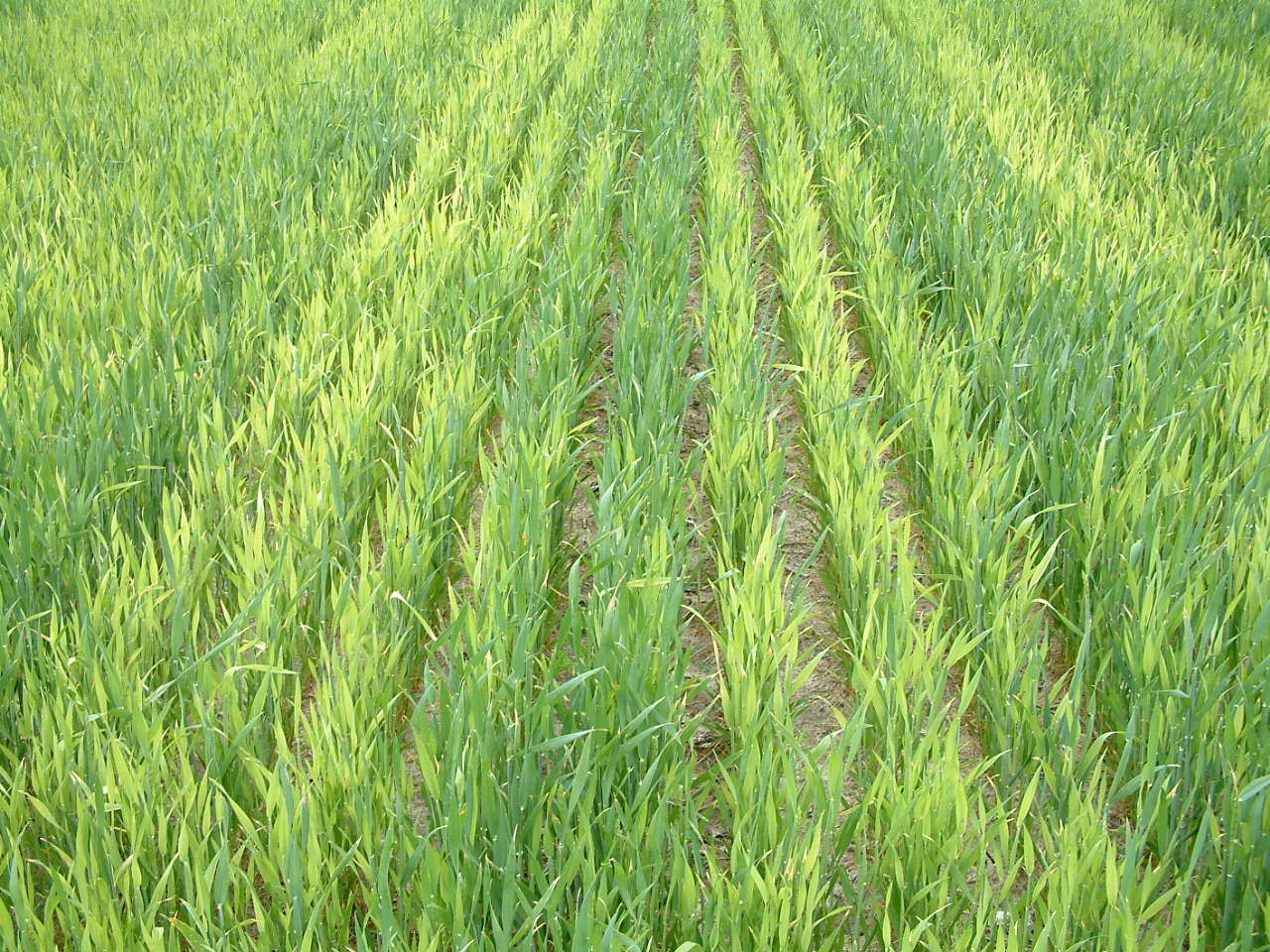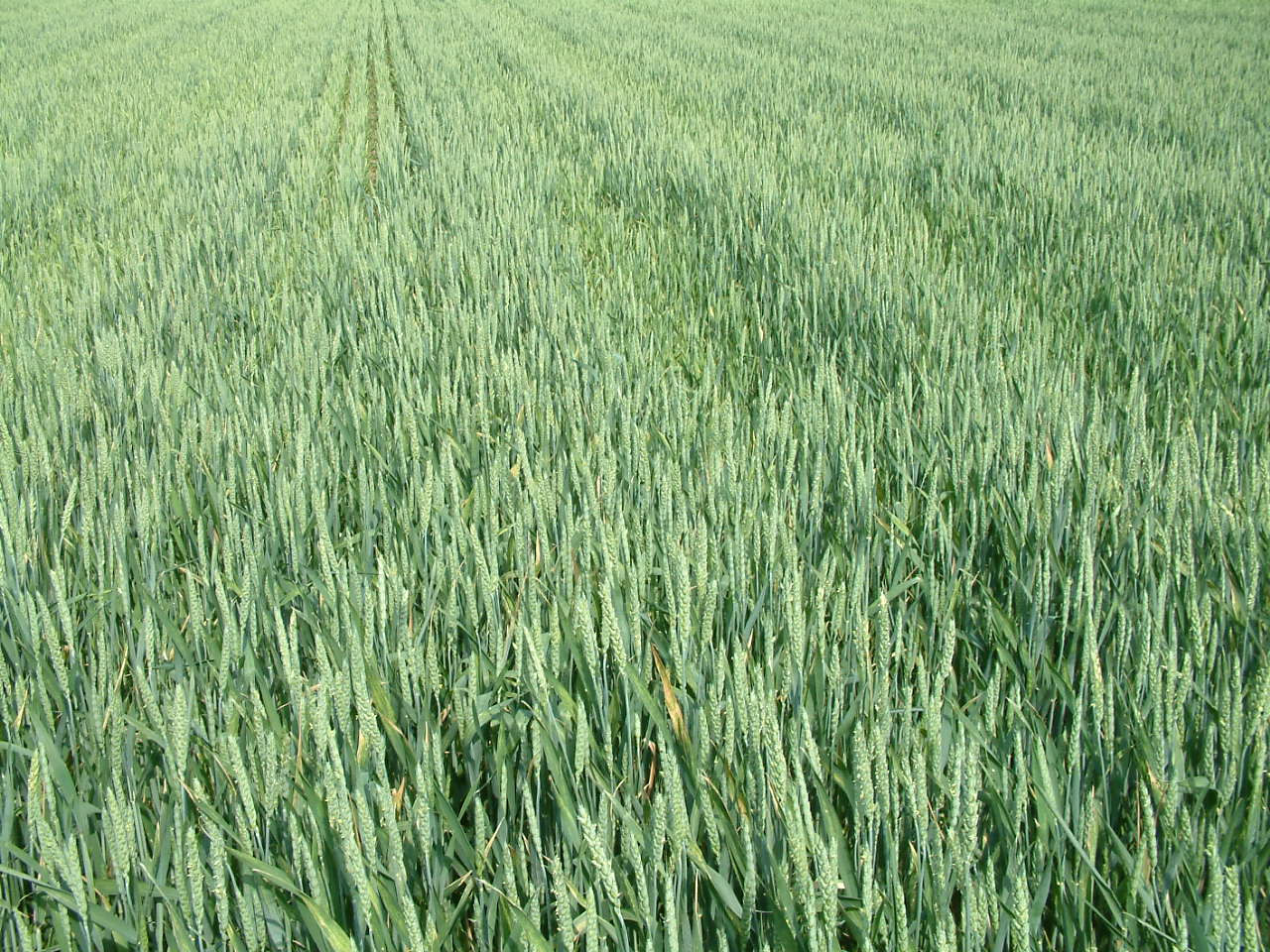
You've reached the Virginia Cooperative Extension Newsletter Archive. These files cover more than ten years of newsletters posted on our old website (through April/May 2009), and are provided for historical purposes only. As such, they may contain out-of-date references and broken links.
To see our latest newsletters and current information, visit our website at http://www.ext.vt.edu/news/.
Newsletter Archive index: http://sites.ext.vt.edu/newsletter-archive/

Keith Balderson, Extension Agent, ANR, Essex County, Dr. Mark Alley, W. G. Wysor Professor and Dr. Wade Thomason, Extension Agronomist, Grains

Plant tissue testing, in conjunction with soil testing, is an excellent method for monitoring plant nutrition to solve problems and to determine if the fertilization program is providing optimum nutrition. During the 2006-07 small grain production season, extension agents from eastern Virginia, with funding provided by the Virginia Small Grains Board, submitted 37 plant tissue samples for testing at a local laboratory. Many of the samples were submitted for trouble shooting a crop problem. A complete analysis was run on 27 samples, while nitrogen (N) only was run on 10 samples in an effort to monitor nitrogen levels in the plant and help farmers make economically and environmentally sound nitrogen fertilizer applications.
The most prevalent deficiency found this year was sulfur (S). Faced with high nitrogen fertilizer prices, many farmers eliminated spring sulfur applications on small grains. In southeastern Virginia, eliminating peanuts from the rotation has resulted in a decreased use of land plaster (calcium sulfate), which supplies large quantities of plant-available S. Of the 27 samples we submitted, 8 indicated S deficiency. The deficiencies were mild to severe, and they generally did not show up until growth stage 25-30. Deficiencies were found on sandy-textured surface soils that contained very little clay in the subsoil. This would be expected as S in the sulfate (plant available) form leaches much in the same manner as N in the nitrate form. When interpreting plant tissue test results for sulfur deficiency, one should pay particular attention to the nitrogen to sulfur ratio. A N:S ration greater than 15 indicates sulfur is probably limiting nutrient, especially if adequate N has been applied. In our samples with S deficiency, the N:S ratio ranged from 18 to 30.
Plants suffering from S deficiency were stunted with yellowing appearing first on the young upper leaves. In contrast, nitrogen deficiency symptoms appear first on the older leaves, and in wheat, plants may have reddish tinge during the winter when N is limiting. In general, S applications of 12-20 pounds per acre corrected the deficiencies. However, yield potential was probably lost because applications should have been made earlier in the growing season.
Soil type differences within this field were readily apparent from the sulfur deficiency pattern. The soil type in the pale areas had a much higher sand content down to 3 feet than the soil type in the dark green areas.

The pictures below were taken from a field that had been ripped prior to cotton planting in the spring of 2006. Notice the strips of S deficiency, which is an indication that the wheat roots were able to go deeper in the ripped areas and pick up sulfur that had accumulated deeper in the soil profile. These pictures are a “before and after” shot where 16 pounds of sulfur per acre were applied on April 19th. This field is an example of a soil that had adequate clay in the subsoil which held S, but with a compacted layer between the surface soil and the subsoil, deep tillage prior to wheat planting may be useful. However, as we need to limit tillage passes after ripping, the use of a no-till ripper prior to wheat planting may be beneficial on these soils.
 |
 |
March 30, 2007 |
April 25, 2007 6 days after application |
Tissue sample results this year also indicated magnesium deficiencies on relatively sandy fields with a long history of lime-stabilized bio-solids application. The lime used in the stabilization process is very high in calcium and low in magnesium, and barley appears to be more sensitive to this deficiency than wheat.
Potassium, calcium, and magnesium are all cations (have a positive charge) in the soil solution. They need to be somewhat balanced in the soil solution or one of them might become deficient to the plant. When the soil solution has one cation available to it in much higher concentrations than the other two, that cation will dominate the soil solution, thus leaving the other two out and possibly causing deficiencies. This can occur even when soil test levels indicate that adequate amounts of the nutrient are in the soil.
When soil testing, we would like to see the magnesium base saturation at 12-15% with a minimum of 10%. On some fields with a long history of lime-stabilized bio-solids application, we are seeing readings below 5%.
Dolomitic limestone is the least expensive method of applying magnesium to soils. It is strongly recommended that on fields that have a potential for magnesium deficiencies that the producer apply dolomitic limestone rather than lime-stabilized bio-solids when the soil pH indicates a lime application is needed.
Bio-solids are a valuable soil amendment which supplies lime (in many cases), N, phosphorous, organic matter, and micro-nutrients. Farmers who utilize this product in crop production should use an intensive soil and plant tissue testing program to help them monitor crop nutrition.
The following picture is from a barley field suffering from magnesium deficiency. Some spots in the field actually died from the deficiency. Magnesium deficiency looks very similar to manganese deficiency. Plant tissue testing should be used to verify the deficiency so that growers can make the proper fertilizer application.

These are excellent examples of how tissue testing can be utilized to help develop an efficient fertility program for small grains and trouble shoot problems. As fertilizer prices continue to increase, utilizing this tool will become more important for maintaining profitability.
Funding for the tissue sample results was provided by the Virginia Small Grains Board as part of the On-Farm Small Grain Plot Work grant approved by the board. This support is greatly appreciated.

Visit Virginia Cooperative Extension